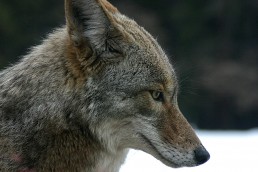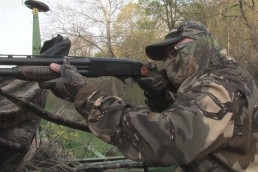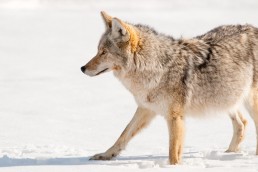Illinois Coyotes: Time to Thin the Pack?
SHARE THIS POST
There was a time in my life that seeing a coyote was a big deal. After several decades of hunting, I can tell you that we have too many coyotes in Illinois. No one really takes credit for the resurgence of coyotes. Most wildlife officials deny any “involvement” in importing coyotes into Illinois. The fact remains that if you live in Illinois you will eventually run across a coyote whether you are driving down the road, sitting in a treestand or just sitting on your back porch in rural areas. Oh yeah, I left out municipal areas where coyotes are living a good life, sometimes at the expense of your pets.
So why do we have so many coyotes?
The coyotes have no natural enemy other than man (since wolves and mountain lions do not live in Illinois in any numbers). Automobiles usually kill coyotes the most. Coyotes feast on rabbits, voles, quail, small animals and even deer. Coyotes also may attack livestock, and ones that live in municipal areas also feast on dogs and cats. Since there is nothing in place to check the growing population we will see numbers increase. Hunters have little impact in the population of coyotes—too few hunters, too many coyotes.
Coyotes are from the “dog family,” and range in weight from 20 to 40 pounds, although one weighing in at 55 pounds was documented. They usually hunt in packs and have a home range of 10 to 30 miles. Those in family groups usually hunt in a 3-square-mile area.
They communicate through a series of yips, barks and howls. Coyotes often run their prey into an ambush too. I’ve witnessed them feasting on deer carcasses. Coyotes are nocturnal and usually feed from dusk to dawn—the key word here is “usually.”
Are you enjoying this post?
You can be among the first to get the latest info on where to go, what to use and how to use it!
Coyotes can be hunted and trapped year ‘round in Illinois, and the use of electronic calls is legal. Check the State of Illinois Hunting and Trapping Regulations for further information.
Calling coyotes can prove to be a challenge if you use a mouth call. Electronic calls are preferred and they offer a variety of sounds: cottontail distress, jackrabbit distress, fawn bleat and a mouse squeaker. Be prepared to hear these animals answering from several different directions. Once heard, some hunters turn off their call and wait for the coyote to show up. If you do use an electronic call for 10 to 30 minutes, and do not receive a response, it is time to move. Choose your location so that if you take a shot with a rifle there is nothing but woods or hills in the background. Illinois is a pretty flat state, so keep in mind rifle ammunition can travel up to 2 miles. Today’s modern cartridges are pretty flat shooting too. The new .17 HMR round offers a flat trajectory round with high velocity up to 2,600 fps. This round is catching on among coyote hunters as word spreads of its capabilities. One drawback is windy conditions, as the lightweight bullet is affected by wind gusts. I suggest patterning your rifle in still and windy conditions to determine if the bullet you are using has wind-bucking capabilities.
Handling of coyote carcasses: Keep in mind this animal is a known carrier of rabies mange, distemper and the parvo virus, so wear appropriate gloves when handling the carcass.
So, if you are looking for an off-season hunting activity, coyotes maybe the answer.
MWO
SHARE THIS POST
Did you enjoy this post?
You can be among the first to get the latest info on where to go, what to use and how to use it!
Dave Leonard
MidWest Outdoors works with more than 200 outdoor experts each year, who contribute articles based on their areas of expertise. MidWest Outdoors magazine offers more fishing and hunting articles than any other publication!




I am having a hard time finding info online regarding coyote hunting in cook county, il. We live next to a forest preserve and quite a few have been using our property as a passing route between ponds in the area. I have three small children and am quite concerned about the coyotes’ presence. While it is legal to hunt on private property in Illinois, does Cook county have specific regulations about hunting them on my unincorporated property? Thank you.
According to the Illinois DNR, it is best to contact a conservation police officer regarding the specific laws. Below is a list of contact information by county.
https://www.dnr.illinois.gov/LawEnforcement/Documents/DistrictCPOPhonesAndEmails.pdf
There is a season for trapping coyote, not year round. Nov 10 through Feb 15
The article in question was written in 2016. It says, “Coyotes can be hunted and trapped year ‘round in Illinois, and the use of electronic calls is legal. Check the State of Illinois Hunting and Trapping Regulations for further information,” which may have been the case back in 2016.